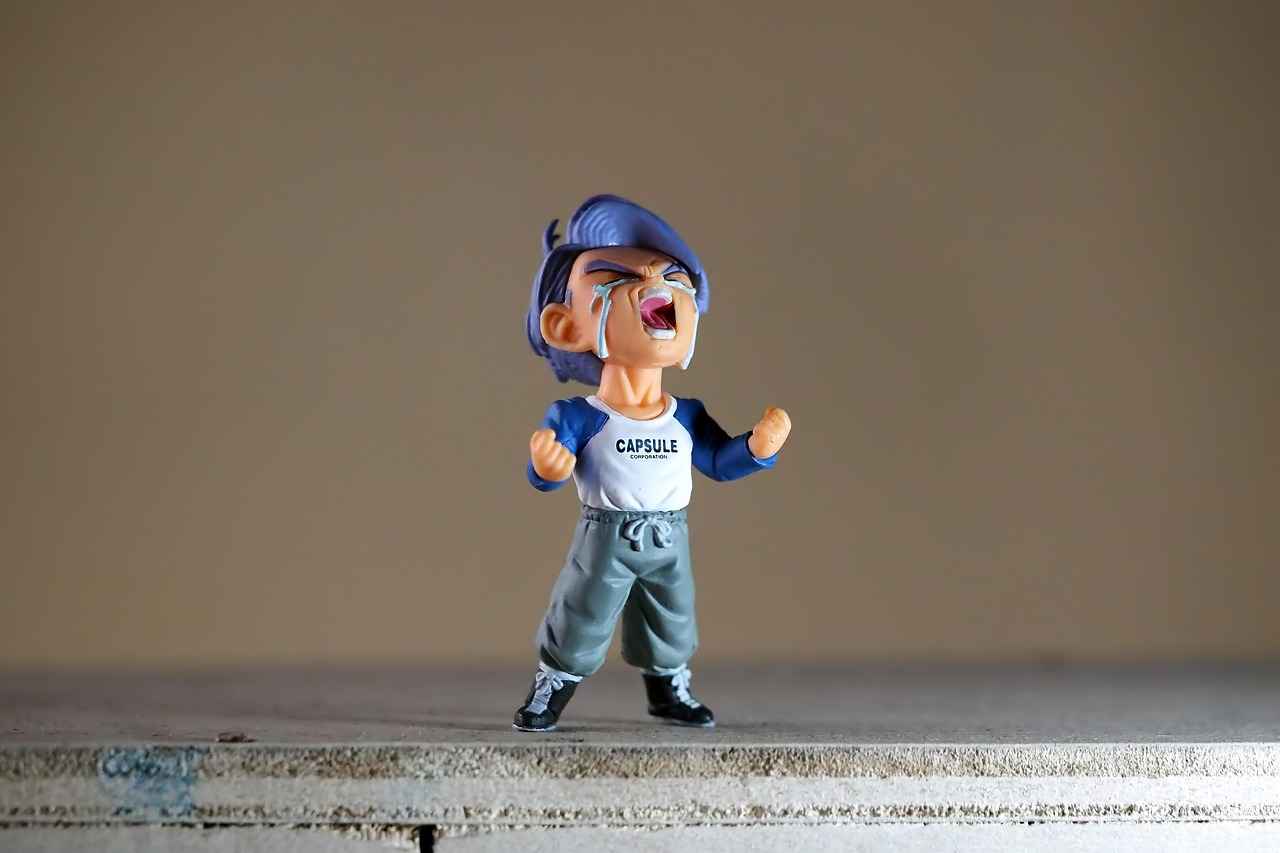This article explores the most compelling anime series showcasing strong female protagonists, highlighting their unique traits, story arcs, and the impact they have on the genre and audience.
1. The Rise of Strong Female Leads in Anime
The evolution of female characters in anime has been significant, moving from traditional roles to complex, empowered leads. These characters resonate with audiences and inspire change in storytelling, offering a refreshing perspective that enriches the medium.
2. Iconic Strong Female Protagonists
- Sailor Moon: A Classic Icon
- Mikasa Ackerman: Strength in Attack on Titan
Sailor Moon remains a pivotal figure in anime, representing strength, friendship, and resilience. This series has influenced countless others and empowered a generation of viewers.
Mikasa Ackerman exemplifies both physical and emotional strength, showcasing a complex character who battles against overwhelming odds while remaining fiercely loyal to her friends.
3. Themes Explored Through Strong Female Characters
- Empowerment and Independence
- Identity and Self-Discovery
Many strong female leads embody empowerment, breaking free from traditional constraints and inspiring viewers to embrace their individuality.
The journey of self-discovery is a common theme, where female protagonists navigate their identities, often leading to profound personal growth.
4. The Role of Female Leads in Action and Adventure Genres
Female protagonists in action and adventure anime challenge stereotypes, proving that they can be just as formidable as their male counterparts. Their presence enriches the genre.
5. The Impact of Strong Female Leads on Anime Culture
Strong female leads have influenced anime culture significantly, from fan communities to merchandise, shaping the future of the industry.
6. Future Trends for Female Protagonists in Anime
As the anime industry evolves, female leads are expected to explore more diverse roles and narratives, creating richer stories. With more female creators entering the industry, we can anticipate a broader range of experiences and perspectives.

1. The Rise of Strong Female Leads in Anime
The Rise of Strong Female Leads in Anime
The landscape of anime has undergone a remarkable transformation over the years, particularly regarding the portrayal of female characters. Traditionally, women in anime were often relegated to supporting roles, characterized by stereotypes that emphasized their dependence on male counterparts. However, the evolution of female characters has been significant, marking a shift towards more complex, empowered leads that resonate deeply with audiences.
Today, strong female protagonists are not only central to the narrative but also embody a range of traits that make them relatable and inspiring. These characters often possess unique abilities, compelling backstories, and a strong sense of agency, allowing them to navigate their worlds with determination and resilience.
One of the most notable aspects of this evolution is the increasing diversity in female character types. From warriors and leaders to intellectuals and strategists, female characters now occupy various roles that challenge traditional gender norms. This shift has opened the door for storytelling innovations that explore themes of empowerment, identity, and self-discovery.
For instance, characters like Mikasa Ackerman from Attack on Titan and Sailor Moon from the iconic series of the same name have become symbols of strength and resilience. They not only fight against external challenges but also grapple with personal dilemmas, making their journeys profoundly relatable.
Moreover, the rise of strong female leads has significantly influenced the anime industry, inspiring creators to develop richer narratives and more nuanced character arcs. As a result, audiences are treated to stories that reflect a broader range of experiences, encouraging a more inclusive representation of women in media.
In conclusion, the evolution of female characters in anime signifies a broader cultural shift towards recognizing and celebrating female strength and complexity. As the industry continues to grow, we can expect even more diverse and empowered female leads to emerge, further enriching the anime landscape.

2. Iconic Strong Female Protagonists
This section delves into the world of anime, where strong female protagonists have become central to many narratives. These characters are not merely sidekicks; they are multifaceted individuals who drive the story forward with their unique traits and motivations. Each character brings something special to the table, leaving a lasting impact on viewers and the overall anime landscape.
| Character | Anime | Traits | Impact |
|---|---|---|---|
| Sailor Moon | Sailor Moon | Compassionate, Brave, Resilient | Empowered a generation of viewers, established a template for female leads. |
| Mikasa Ackerman | Attack on Titan | Strong, Loyal, Determined | Redefined female strength in action genres, showcasing loyalty amidst chaos. |
| Hinata Hyuga | Naruto | Shy, Determined, Kind-hearted | Embodied the journey of self-discovery and personal growth. |
Each of these characters not only enriches their respective stories but also resonates with audiences on a deeper level. For instance, Sailor Moon has become a cultural icon, representing themes of friendship and empowerment. Her journey inspires viewers to embrace their inner strength and fight for what they believe in.
Similarly, Mikasa Ackerman demonstrates that female characters can possess both physical prowess and emotional depth. Her loyalty and determination in the face of adversity make her a role model for many fans. Additionally, Hinata Hyuga illustrates the importance of overcoming personal insecurities, making her relatable to those who struggle with self-acceptance.
In conclusion, the portrayal of strong female protagonists in anime not only enhances storytelling but also provides powerful role models for viewers. These characters challenge stereotypes and inspire audiences to embrace their individuality, ultimately contributing to a more inclusive and diverse anime culture.
2.1. Sailor Moon: A Classic Icon
Sailor Moon, created by Naoko Takeuchi, is not just a beloved anime series; it is a cultural phenomenon that has shaped the landscape of anime since its debut in the early 1990s. The show follows the journey of Usagi Tsukino, a seemingly ordinary girl who transforms into the titular heroine, fighting for love and justice alongside her friends. This narrative of transformation and empowerment resonates strongly with audiences, making Sailor Moon a pivotal figure in anime history.
1. The Significance of Sailor Moon
- Empowerment: Sailor Moon embodies the essence of empowerment, showing that anyone can be a hero regardless of their background or circumstances.
- Friendship: The series emphasizes the importance of friendship and teamwork, illustrating how collaboration can lead to overcoming challenges.
- Resilience: Usagi’s character demonstrates resilience, facing numerous adversities while maintaining her kindness and optimism.
2. The Legacy of Sailor Moon
The impact of Sailor Moon extends beyond its narrative. It has paved the way for future female leads in anime, inspiring creators to develop characters that are not only strong but also multifaceted. The show’s themes of love, sacrifice, and growth have become templates for character development in many subsequent series.
3. Cultural Representation
Sailor Moon’s diverse cast of characters has played a crucial role in promoting acceptance and understanding within the anime community. By representing various identities and backgrounds, the series has fostered a sense of belonging and empowerment among its viewers.
4. Conclusion
In conclusion, Sailor Moon remains a classic icon in anime, representing strength, friendship, and resilience. Its influence is seen in countless series that followed, empowering a generation of viewers and inspiring them to embrace their own strengths. As we look to the future, the legacy of Sailor Moon continues to encourage the creation of strong, relatable female protagonists in anime.
2.1.1. The Legacy of Sailor Moon
The Legacy of Sailor Moon
The impact of Sailor Moon on anime and popular culture is profound and enduring. Since its debut in the early 1990s, this iconic series has not only captured the hearts of fans worldwide but has also redefined the portrayal of female characters in anime. By featuring a diverse group of strong female leads, Sailor Moon established a template for character development that many subsequent series would follow.
One of the most remarkable aspects of Sailor Moon is its focus on friendship and teamwork. The series emphasizes that strength comes not just from individual prowess but also from the bonds shared among friends. This theme resonates deeply with audiences, particularly young viewers, who see the importance of support systems in overcoming challenges.
Moreover, Sailor Moon’s characters are multifaceted, each with their own dreams, struggles, and growth arcs. This complexity allows viewers to connect with them on a personal level, fostering a sense of representation that was previously lacking in the anime landscape. The show’s characters, from the determined Usagi Tsukino to the fierce Sailor Mars, break away from traditional gender roles, showcasing that female characters can be both vulnerable and powerful.
Furthermore, Sailor Moon’s influence extends beyond the screen. It has inspired countless creators, resulting in a wave of anime featuring strong female protagonists. This shift has not only enriched the storytelling landscape but has also encouraged a more inclusive environment within the industry. As a cultural phenomenon, Sailor Moon has paved the way for discussions surrounding gender equality and representation in media.
In conclusion, the legacy of Sailor Moon is not just about its popularity; it is about the lasting change it has brought to the portrayal of female characters in anime. By championing themes of empowerment, friendship, and resilience, Sailor Moon remains a beacon of inspiration for future generations of creators and viewers alike.
2.1.2. Cultural Impact and Representation
Sailor Moon has transcended its role as a mere anime series, evolving into a cultural phenomenon that has significantly influenced the representation of diverse identities within the medium. This impact is particularly notable in an industry that has historically been dominated by male perspectives. The series not only showcases a variety of characters from different backgrounds but also emphasizes themes of acceptance and understanding, making it a beacon of hope for many viewers.
The protagonist, Usagi Tsukino, embodies the struggles and triumphs of young women, illustrating that vulnerability can coexist with strength. Through her journey, viewers witness the importance of friendship, love, and self-acceptance. Each character in the series, from the intelligent Ami Mizuno to the fiercely independent Makoto Kino, represents different facets of femininity and personal growth.
Sailor Moon also addresses issues such as LGBTQ+ representation, which was groundbreaking for its time. Characters like Haruka Tenou and Michiru Kaioh not only challenge traditional gender norms but also promote the idea that love and identity come in many forms. This inclusivity has resonated with audiences worldwide, fostering a sense of community and acceptance among fans.
Moreover, the show’s ability to tackle complex themes such as identity, friendship, and self-discovery has paved the way for future anime series to explore similar narratives. The legacy of Sailor Moon continues to inspire creators to develop characters that reflect the diverse experiences of their audience, ultimately shaping a more inclusive anime landscape.
In conclusion, the cultural impact of Sailor Moon is profound and enduring. By promoting diverse identities and fostering acceptance, it has not only changed the narrative landscape of anime but has also empowered generations of viewers to embrace their true selves.
2.2. Mikasa Ackerman: Strength in Attack on Titan
Mikasa Ackerman is a standout character in the acclaimed anime series Attack on Titan, representing not only physical prowess but also profound emotional depth. Her journey throughout the series exemplifies the struggles and triumphs of a strong female lead, making her a pivotal figure in contemporary anime.
From the outset, Mikasa is portrayed as an incredibly skilled fighter, often outmatching her male counterparts in battles against the Titans. Her combat skills are not merely for show; they are a testament to her determination and resilience in the face of overwhelming odds. This physical strength is complemented by her unwavering loyalty to her friends, particularly to Eren Yeager, whom she protects fiercely. This loyalty drives much of her character development and adds layers to her persona.
Moreover, Mikasa’s emotional journey is equally significant. She grapples with her past trauma, including the loss of her family, which shapes her worldview and relationships. Her struggle with identity and purpose is a central theme in the series, as she often questions her motivations and the implications of her actions. This internal conflict makes her relatable to viewers, showcasing that strength comes in various forms, not just physical.
In addition to her personal battles, Mikasa’s character challenges traditional gender roles in anime. She is not just a side character or a love interest; she is a formidable warrior and a leader in her own right. Her presence in Attack on Titan encourages discussions about female empowerment and representation in the anime industry.
Ultimately, Mikasa Ackerman’s character is a powerful example of what it means to be a strong female lead in anime. Her blend of strength, loyalty, and vulnerability resonates deeply with audiences, making her an iconic figure in the realm of anime.
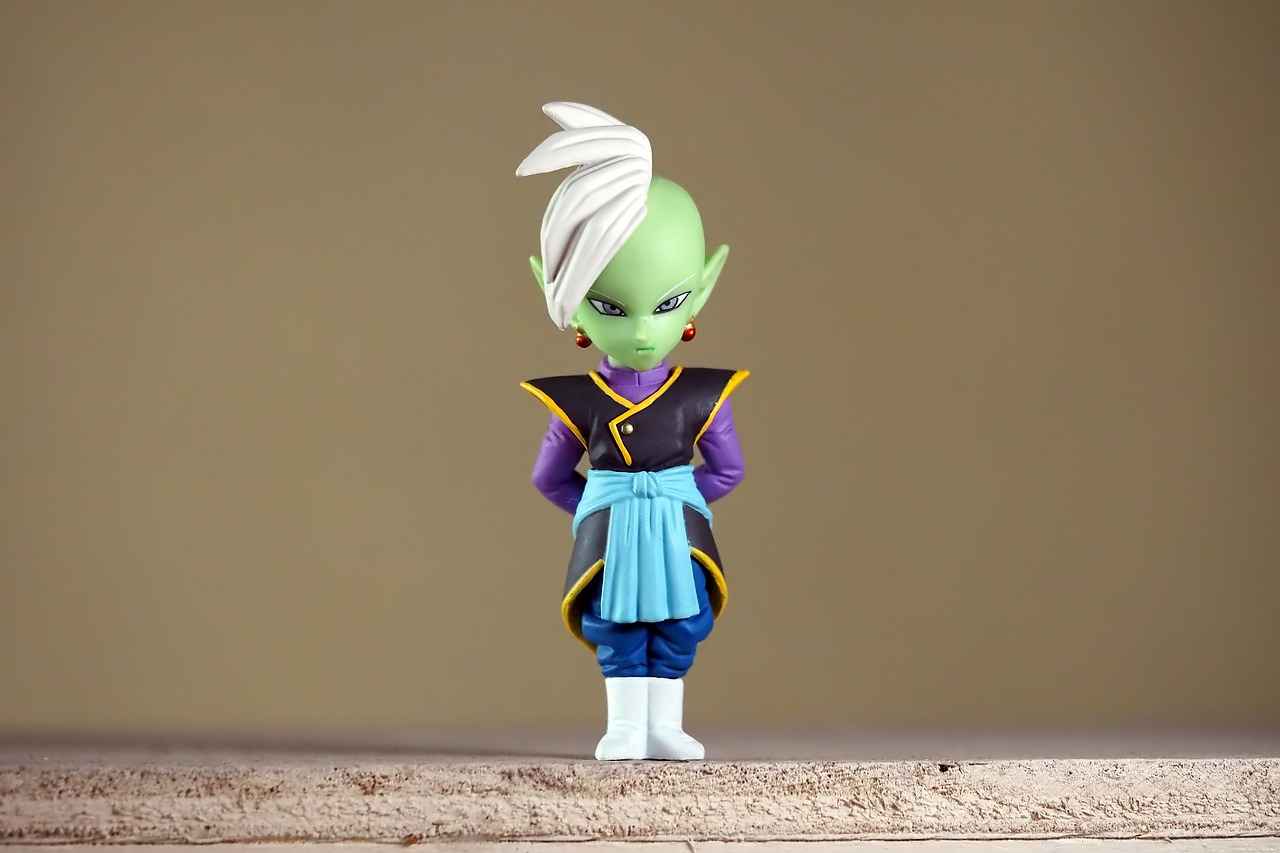
3. Themes Explored Through Strong Female Characters
This section explores the themes frequently examined through the lens of strong female characters in anime. These themes not only enhance the depth of the narratives but also resonate with audiences, encouraging introspection and discussion.
- Empowerment: Strong female leads often symbolize the struggle for empowerment. They break free from societal constraints, challenging traditional gender roles and inspiring viewers to embrace their own strength. These characters often face formidable obstacles, yet they rise to the occasion, showcasing resilience and determination.
- Identity: The journey of self-discovery is pivotal for many female protagonists. As they navigate their personal challenges, they often confront questions regarding their identity, purpose, and place in society. This exploration leads to profound character development, allowing viewers to connect deeply with their journeys.
- Struggle Against Societal Norms: Many narratives featuring strong female leads tackle the conflict between individual desires and societal expectations. These characters often find themselves at odds with the norms imposed upon them, leading to compelling story arcs that highlight their courage and tenacity.
- Friendship and Solidarity: Strong female characters frequently emphasize the importance of friendship and solidarity. Their relationships with other characters often serve as a source of strength, illustrating how collaboration and support can empower individuals to overcome challenges.
- Leadership: Female protagonists often take on leadership roles, showcasing their ability to guide and inspire others. This theme not only enriches the narrative but also challenges the stereotype that leadership is a male-dominated trait.
In conclusion, the themes explored through strong female characters significantly enhance the narrative landscape of anime. They provide audiences with relatable and inspiring figures who reflect the complexities of real-life challenges, fostering a deeper understanding of empowerment, identity, and societal norms.
3.1. Empowerment and Independence
Empowerment and independence are central themes in many anime series, particularly those featuring strong female leads. These characters often challenge the norms imposed by society, showcasing their ability to overcome obstacles and assert their identities. This narrative shift not only resonates with viewers but also encourages them to embrace their own individuality.
In recent years, anime has witnessed a significant transformation in the portrayal of female protagonists. Characters such as Makoto Naegi from Danganronpa and Faye Valentine from Cowboy Bebop exemplify the strength and complexity of modern female leads. They embody traits such as resilience, intelligence, and emotional depth, allowing audiences to connect with their journeys on multiple levels.
Many strong female leads are portrayed as independent thinkers who refuse to conform to traditional gender roles. For instance, Sailor Moon not only fights for justice but also emphasizes the importance of friendship and collaboration. This multifaceted approach to character development enriches the narrative and inspires viewers to reflect on their own lives.
| Character | Show | Traits |
|---|---|---|
| Sailor Moon | Sailor Moon | Strength, Friendship, Resilience |
| Mikasa Ackerman | Attack on Titan | Loyalty, Combat Skills, Emotional Depth |
| Faye Valentine | Cowboy Bebop | Independence, Intelligence, Complexity |
These narratives not only empower the characters themselves but also provide a platform for discussions about gender equality and representation in media. As viewers witness these strong female leads navigate their worlds, they are inspired to pursue their own paths with confidence and determination.
In conclusion, the portrayal of strong female leads in anime serves as a powerful reminder of the importance of empowerment and independence. By breaking free from traditional constraints, these characters inspire audiences to embrace their strengths and pursue their dreams.
3.2. Identity and Self-Discovery
The journey of self-discovery is a profound and transformative experience often depicted in anime, particularly through the lens of female protagonists. These characters embark on quests that not only challenge their external circumstances but also lead them to explore their inner selves. As they navigate various challenges, they often confront societal expectations, personal fears, and their own identities.
In many anime series, the evolution of identity is central to the narrative. Female leads face obstacles that force them to question who they are and what they stand for. This journey is not merely about overcoming external conflicts but also about understanding their own values and beliefs. For instance, characters like Shouko Komi from “Komi Can’t Communicate” illustrate the struggles of social anxiety and the quest for connection, highlighting the importance of self-acceptance.
Moreover, the theme of resilience plays a crucial role in these stories. As female protagonists encounter setbacks, their growth often comes from their ability to rise from failures. This resilience inspires viewers, demonstrating that personal growth is a continuous journey rather than a destination. Characters like Hinata Hyuga from “Naruto” exemplify this, as they transform from insecure individuals into confident warriors, showcasing the power of determination and self-belief.
- Empowerment: Many female leads find empowerment through their journeys, breaking free from societal norms and expectations.
- Complex Relationships: The exploration of identity often involves complex relationships that challenge and support the protagonist’s growth.
- Symbolism: Various symbols, such as transformations or pivotal moments, represent the character’s internal changes.
In conclusion, the theme of identity and self-discovery in anime serves as a powerful narrative device that not only entertains but also resonates deeply with audiences. It encourages viewers to reflect on their own journeys, fostering a sense of connection and understanding.
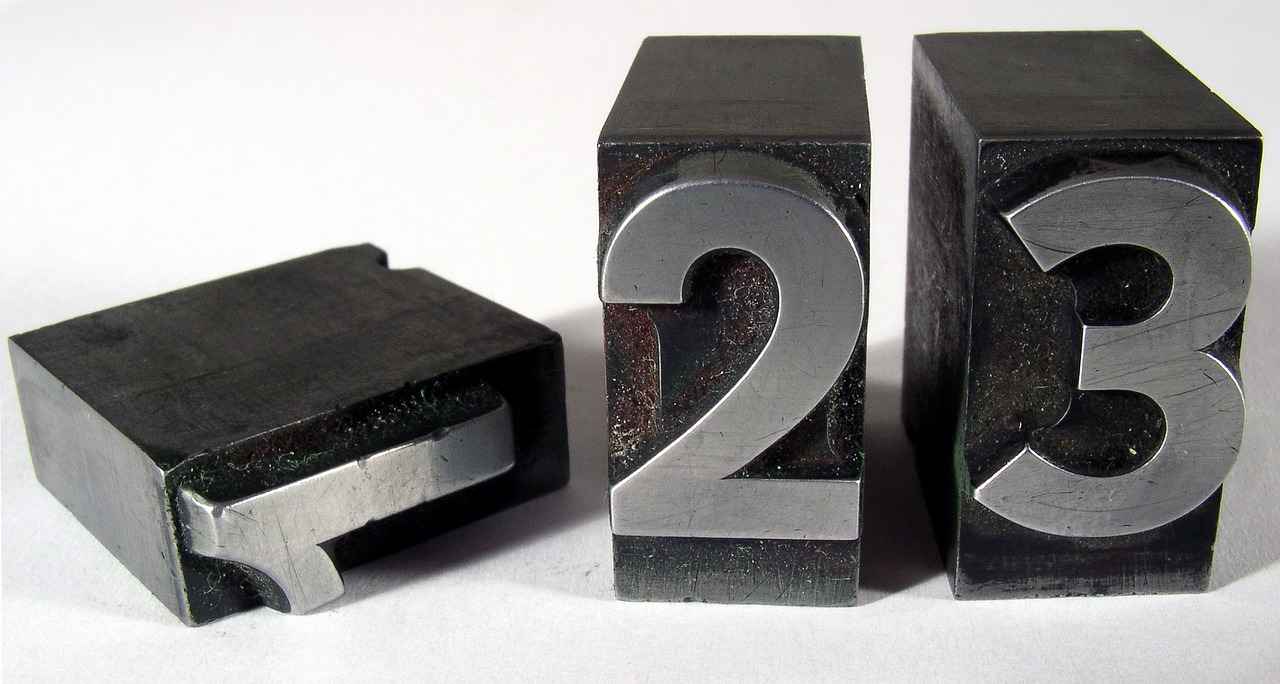
4. The Role of Female Leads in Action and Adventure Genres
The Role of Female Leads in Action and Adventure Genres
In the realm of action and adventure anime, female protagonists have emerged as powerful figures who not only challenge traditional gender roles but also redefine the very essence of heroism. These characters often embody strength, resilience, and determination, proving that they can stand toe-to-toe with their male counterparts. This evolution has significantly enriched the genre, offering viewers a more diverse and inclusive narrative landscape.
| Character | Anime Series | Traits |
|---|---|---|
| Mikasa Ackerman | Attack on Titan | Bravery, loyalty, combat skills |
| Asuka Langley Soryu | Neon Genesis Evangelion | Complexity, determination, emotional depth |
| Faye Valentine | Cowboy Bebop | Resourcefulness, independence, wit |
Dynamic Action Sequences
Female leads in action-packed narratives often engage in dynamic action sequences that showcase their combat skills and strategic thinking. These thrilling moments not only captivate audiences but also highlight the characters’ capabilities, allowing them to shine in ways that were previously reserved for male characters. For instance, Mikasa’s fierce battles against Titans exemplify her strength and tactical prowess, making her a standout figure in the series.
Leadership and Team Dynamics
Moreover, female characters frequently assume leadership roles, demonstrating teamwork and collaboration. This adds depth to the story and emphasizes the importance of unity in overcoming challenges. Characters like Erza Scarlet from Fairy Tail exemplify this trait, leading her guild with strength and conviction while showcasing the power of female leadership in a male-dominated environment.
As we continue to see the rise of strong female protagonists in action and adventure anime, it becomes increasingly clear that their presence not only challenges stereotypes but also enriches the genre. By breaking free from traditional constraints, these characters inspire audiences and pave the way for more diverse storytelling.
4.1. Dynamic Action Sequences
Dynamic Action Sequences are a hallmark of anime featuring strong female leads. These sequences not only showcase the characters’ combat skills but also their strategic thinking, which captivates audiences and elevates the overall narrative. Female protagonists often find themselves in intense battles, displaying a level of determination and resilience that resonates deeply with viewers.
In many anime series, these action-packed moments are meticulously crafted to highlight the unique abilities of the female leads. For instance, in series like Attack on Titan, characters like Mikasa Ackerman engage in breathtaking fight scenes that combine agility with tactical prowess. Such sequences not only serve to entertain but also to develop the character’s arc, revealing their inner strength and complexities.
The portrayal of strong female leads in action sequences challenges traditional gender roles, proving that women can be just as formidable as their male counterparts. This shift in representation is pivotal, as it inspires a new generation of viewers to embrace empowerment and independence. Moreover, these sequences often incorporate elements of teamwork, where female characters collaborate with others to overcome challenges, further enriching the narrative.
As audiences witness these dynamic action sequences, they become invested in the characters’ journeys. This emotional engagement is crucial, as it allows viewers to connect with the protagonists on a deeper level. The combination of thrilling action and character development creates a compelling viewing experience that keeps fans coming back for more.
In conclusion, the dynamic action sequences featuring strong female leads not only enhance the excitement of anime but also contribute significantly to character development and thematic depth. As the industry continues to evolve, we can expect these powerful portrayals to remain at the forefront, challenging norms and inspiring audiences worldwide.
4.2. Leadership and Team Dynamics
Leadership and Team Dynamics in anime is a captivating subject that showcases how female characters often embody strength and unity. These characters frequently take on leadership roles, proving that their influence extends beyond mere participation in the story. Their ability to unite teams and motivate others adds significant depth to the narrative, emphasizing the importance of collaboration and teamwork.
In many series, female protagonists are portrayed as natural leaders who inspire those around them. For instance, in My Hero Academia, characters like Ochaco Uraraka demonstrate how teamwork can lead to victory, highlighting the value of each member’s contribution. This not only enhances the storyline but also teaches viewers about the strength found in unity.
Furthermore, the dynamics within these teams often reflect real-world challenges, such as communication, trust, and conflict resolution. Female leads often navigate these complexities with grace, showcasing their emotional intelligence and resilience. This portrayal encourages audiences to appreciate the significance of effective leadership in achieving shared goals.
Moreover, female characters often challenge traditional gender roles, proving that leadership is not confined to male characters. In Attack on Titan, Mikasa Ackerman exemplifies this by taking charge in critical moments, demonstrating that strength comes in many forms. Her unwavering loyalty and strategic thinking not only save lives but also inspire her comrades to rise to their potential.
In conclusion, the representation of female characters as leaders in anime enriches the storytelling experience. Their roles promote a narrative that values team dynamics and collaboration, encouraging viewers to recognize the importance of unity in both fictional and real-world scenarios.
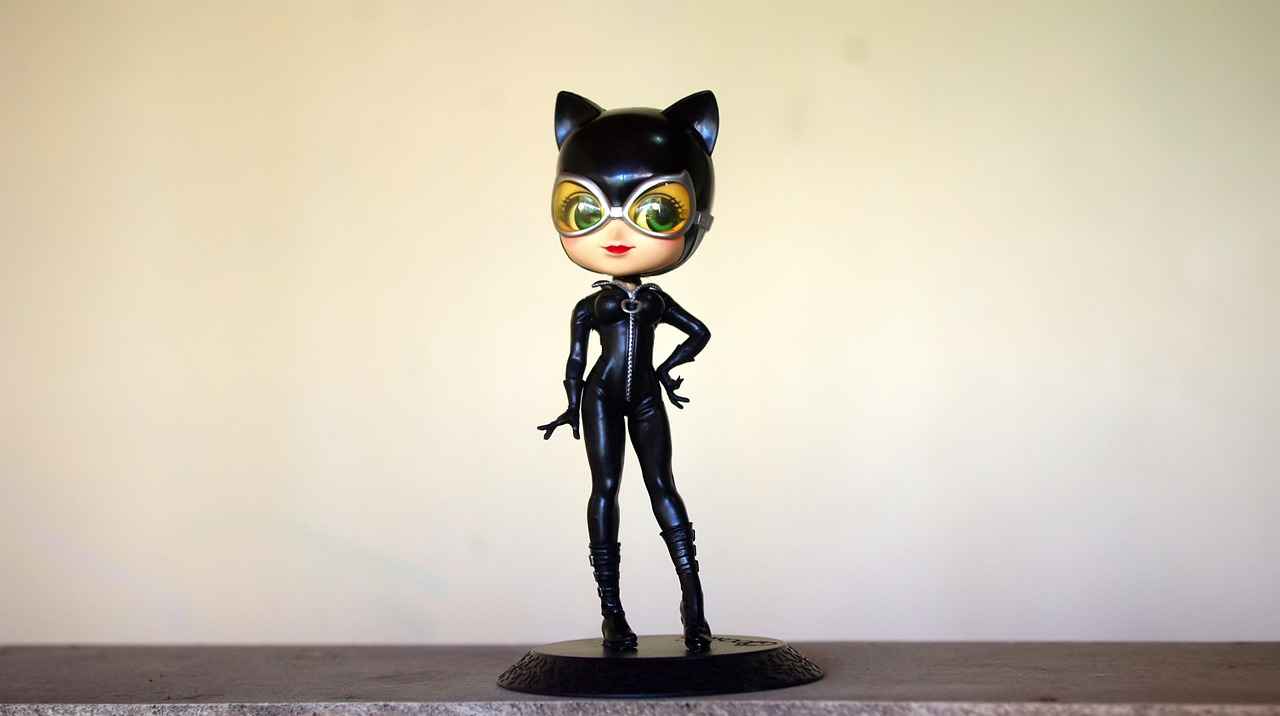
5. The Impact of Strong Female Leads on Anime Culture
The Impact of Strong Female Leads on Anime Culture
This section delves into the profound influence that strong female protagonists have had on anime culture, shaping various aspects from fan communities to merchandise. These characters are not just mere figures in their respective stories; they have become symbols of empowerment and change, impacting the anime industry significantly.
- Fan Engagement and Community Building: Strong female leads often foster vibrant fan communities. These characters resonate deeply with audiences, leading to passionate discussions and shared experiences. Fans form online forums, social media groups, and fan art communities centered around their favorite heroines, creating a sense of belonging and shared appreciation.
- Merchandise and Representation: The popularity of strong female characters has led to a surge in merchandise that celebrates these protagonists. From action figures to clothing lines, fans can express their admiration through various products. This representation in merchandise not only acknowledges the characters’ significance but also encourages companies to invest in diverse representations.
- Shaping Future Narratives: As strong female leads gain prominence, they influence the narratives being told in anime. Writers and creators are increasingly inspired to develop complex female characters who challenge traditional gender roles. This shift enriches storytelling and opens doors for more varied and authentic portrayals.
- Cultural Impact: The presence of strong female leads in anime has contributed to broader cultural discussions about gender roles and representation. These characters often embody traits such as resilience, independence, and leadership, which resonate with viewers and inspire them to challenge societal norms.
In conclusion, the influence of strong female leads in anime extends beyond the screen. They have become integral to fan culture, merchandise trends, and the evolution of storytelling within the industry. As we look to the future, it is clear that these characters will continue to shape anime culture, paving the way for even more diverse and empowering narratives.
5.1. Fan Engagement and Community Building
Fan Engagement and Community Building are vital aspects of anime culture, particularly when it comes to strong female characters. These characters often inspire passionate fan communities that engage in lively discussions, creating a sense of belonging and shared experiences among fans.
When a female protagonist resonates with viewers, it can lead to the formation of dedicated online forums, social media groups, and fan art communities. Fans often share their interpretations of characters, discuss plot developments, and even create fan fiction that expands on the original narratives. This engagement fosters a collaborative environment where fans can express their creativity and connect with others who share their interests.
Moreover, the presence of strong female leads encourages diverse perspectives within these communities. Fans from various backgrounds come together to discuss themes such as empowerment, identity, and resilience—all of which are often embodied by these characters. This not only enriches the conversations but also enhances the overall appreciation for the anime, as fans explore deeper meanings and implications behind character arcs and storylines.
Additionally, events such as anime conventions and online meet-ups often celebrate these characters, providing fans with opportunities to dress as their favorite protagonists, participate in panels, and engage in discussions with creators and fellow enthusiasts. Such gatherings further solidify the bonds formed within these communities, allowing fans to share their passion in person.
In conclusion, strong female characters play a crucial role in fan engagement and community building within the anime world. Their ability to inspire discussions and foster connections among fans enhances the anime culture, making it more inclusive and vibrant.
5.2. Merchandise and Representation
Merchandise and Representation
The rise of strong female leads in anime has not only transformed storytelling but has also significantly influenced the world of merchandise. As these characters gain popularity, fans are eager to celebrate their favorite heroines through various forms of collectibles and products.
In recent years, we have witnessed a remarkable shift in the types of merchandise available, reflecting the diversity and strength of female protagonists. From action figures and apparel to art books and accessories, the range has expanded to cater to diverse fan interests. This increased representation allows fans to connect with characters on a deeper level, as they can showcase their admiration in tangible ways.
| Type of Merchandise | Description |
|---|---|
| Figures | Detailed action figures of strong female leads, often featuring dynamic poses and intricate designs. |
| Clothing | Apparel inspired by popular characters, allowing fans to express their fandom through fashion. |
| Art Books | Collections of artwork and illustrations that celebrate the design and evolution of female characters. |
| Accessories | Jewelry, bags, and other items that feature symbols or motifs related to strong female characters. |
Moreover, the success of merchandise featuring strong female leads has prompted creators to further develop these characters, knowing that there is a market demand for their stories. This feedback loop not only enhances the depth of characters but also encourages more inclusive storytelling in the anime industry.
As we look to the future, the trend of merchandising strong female characters is likely to continue growing. With an increasing number of female protagonists breaking traditional molds, fans can expect even more diverse and empowering representation in the products they love.
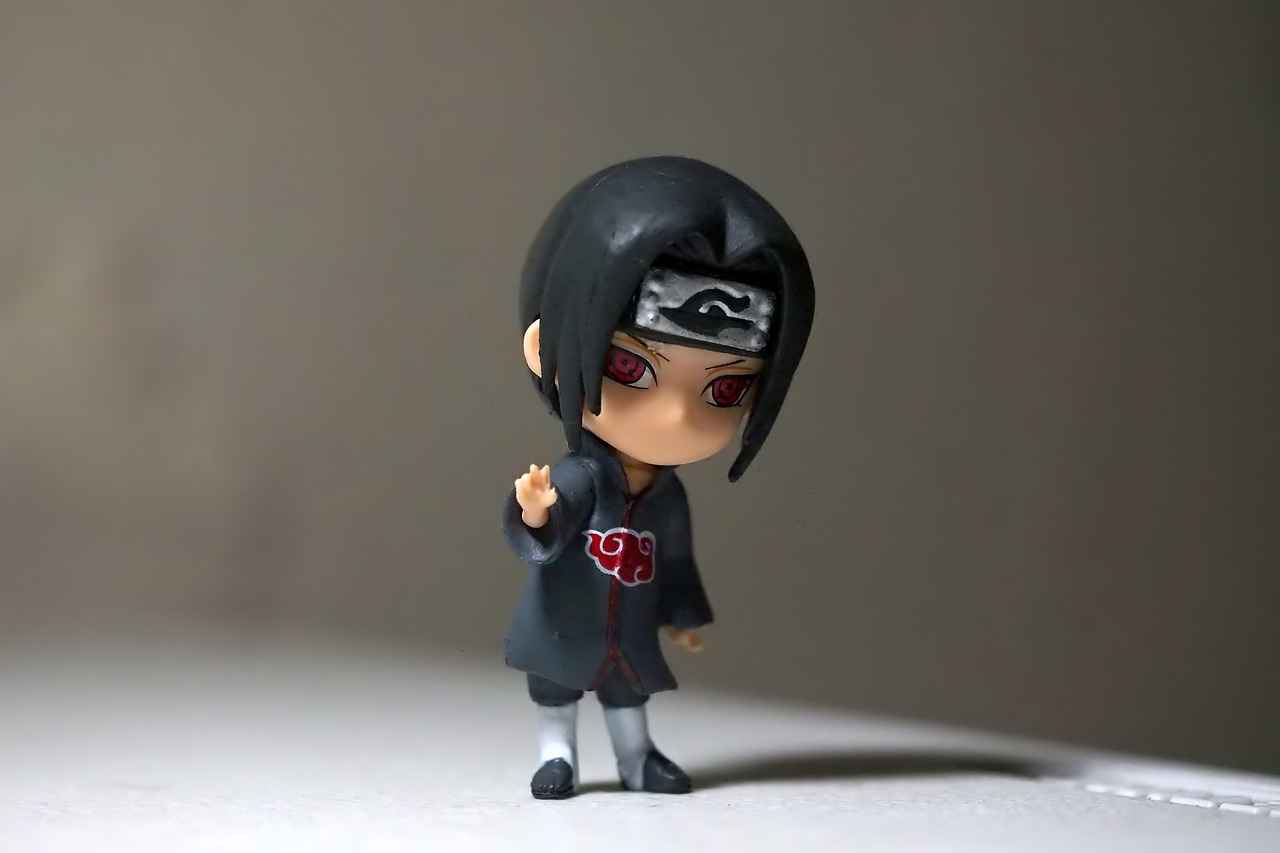
6. Future Trends for Female Protagonists in Anime
Future Trends for Female Protagonists in Anime
As we look forward to the evolving landscape of anime, the representation of female protagonists is poised for significant transformation. The trends suggest that we will see an even greater diversity in storytelling, which will enrich the narratives and characters that audiences have come to love.
- Expanding Roles and Narratives: The anime industry is gradually breaking away from traditional stereotypes, allowing female leads to occupy more complex and varied roles. This shift is not just about showcasing strength; it’s about exploring a myriad of experiences that reflect the realities of women today. Expect to see female characters who are not only warriors or heroes but also thinkers, leaders, and innovators.
- Greater Representation in Production: With an increasing number of female creators entering the anime industry, there is a rising potential for authentic storytelling. These creators bring unique perspectives and experiences, which can lead to the development of more relatable and nuanced female characters. This change can help convey stories that resonate deeply with a broader audience.
Moreover, the narratives are likely to delve deeper into themes of identity, empowerment, and the struggle against societal norms. As female protagonists navigate their journeys, viewers will witness their growth, resilience, and the challenges they face in a male-dominated world.
Additionally, the incorporation of diverse backgrounds and cultures will enhance the richness of the stories. With globalization and the internet allowing for greater cross-cultural exchange, anime can present female characters from various ethnicities and backgrounds, providing a more inclusive representation.
In conclusion, the future of female protagonists in anime looks promising. As the industry continues to evolve, we can anticipate a landscape filled with strong, diverse, and multifaceted characters that will not only entertain but also inspire audiences around the globe.
6.1. Expanding Roles and Narratives
Expanding Roles and Narratives
As the anime industry continues to evolve, female leads are increasingly stepping into a variety of roles that challenge traditional norms. This shift is not just about putting women in the forefront; it’s about crafting complex narratives that reflect the diverse experiences of women today. The portrayal of female characters is becoming more nuanced, allowing them to explore a wide range of emotions, motivations, and backgrounds.
In recent years, we have witnessed a significant transformation in how female characters are written. They are no longer confined to the roles of sidekicks or love interests; instead, they are becoming the driving force of their stories. This evolution is evident in series like “Re:Zero – Starting Life in Another World”, where the protagonist, Emilia, navigates a world filled with challenges that test her strength and resolve. Such narratives allow for a deeper exploration of themes such as identity, empowerment, and the complexities of human relationships.
Moreover, the incorporation of female perspectives enriches the storytelling landscape. With more female writers and directors entering the industry, we can expect a broader range of experiences to be represented. This influx of diverse voices is paving the way for stories that resonate with a wider audience and reflect the realities of modern society.
As these narratives expand, we can anticipate a future where female protagonists are not only strong but also relatable, facing challenges that mirror those of their viewers. This shift is crucial for fostering a more inclusive anime culture, where everyone can see themselves represented on screen.
In conclusion, the evolution of female leads in anime signifies a positive change in the industry. By breaking traditional molds and embracing diversity, anime is creating richer stories that captivate audiences and inspire future generations.
6.2. Greater Representation in Production
As we look to the future of anime, one of the most exciting developments is the increased representation of women in production roles. With more female creators entering the industry, we can expect a broader range of experiences and perspectives. This shift is crucial as it leads to the creation of more authentic and relatable female characters in future anime series.
Historically, the anime industry has been predominantly male-dominated, often resulting in female characters that reflect a narrow view of femininity. However, as female writers, directors, and producers gain recognition and influence, the narratives surrounding female leads are evolving. This change is not just about adding women to the production team; it’s about incorporating diverse life experiences and viewpoints that resonate with a wider audience.
Increased representation can be seen in various aspects of storytelling. Female characters are now portrayed with more depth and complexity, showcasing their struggles, ambitions, and triumphs. This development allows for narratives that challenge traditional gender roles and stereotypes, making stories more engaging and relatable. For instance, characters like Violet Evergarden and Rei Ayanami are not just strong because of their physical abilities; their emotional journeys and personal growth are central to their stories.
Moreover, as female creators bring their unique perspectives to the table, we can expect to see more stories that address important themes such as empowerment, identity, and resilience. These themes resonate with audiences, particularly younger viewers who are seeking representation in media that reflects their own experiences.
In conclusion, the future of anime looks promising with the growing presence of female creators. Their contributions are set to enrich the industry, leading to a more diverse array of female characters and stories that reflect the complexities of real life. As we continue to support and recognize these creators, we pave the way for a more inclusive and vibrant anime landscape.
